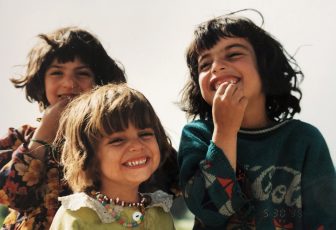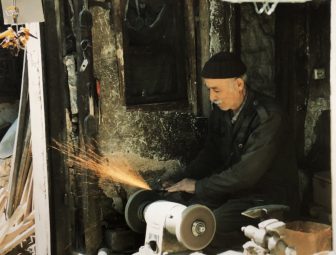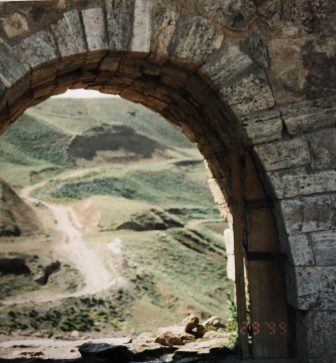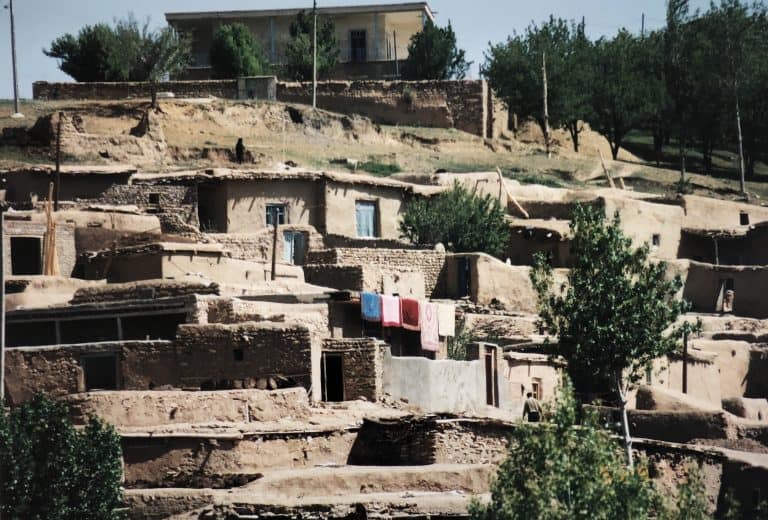
[ May 1999 ] We stayed one night in a town called Takab in West Azerbaijan province in the north west of Iran.
It is situated about 250 km north west of Hamadan, the largest city around here.
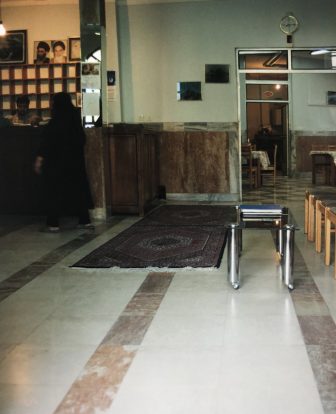
On the way here, our driver Ali stopped the car a few times and asked the way to the passers-by, calling out “Agah, Takab?”.
This ‘Agah’ was characteristic.
The sound of ‘ga’ was higher note and the lingering sound of ‘ah’ was wavy.
I suppose it meant “Excuse me!”, but apparently the word means “sir” in English.
The hotel we stayed in Takab had a few lovely carpets and I wanted to ask where I could get them and how much they cost, though I was not brave enough to ask that.
In Takab, we went to see Takht-e Soleyman, the ruins of Sasanian Empire (226 – 651 AD).
The Sasanian Empire was familiar to me as I remembered learning about it at school and its religion was Zoroastrianism.
So this place was famous as the ruins of Zoroastrianism, too.
Apparently Takht-e Soleyman means ‘the throne of King Solomon’ and that is because there is a legend that King Solomon imprisoned a monster inside the crater lake which is the centre of the ruins.
For me the most impressive thing was the archaeologist who guided us.

He said he had been working on this site for 4 years.
His way of talking was nice and quiet and elegant.
His face reminded me of an actor who had played the role of the captain in the old German film “The Boat”and his eyes were transparent blue.
Because other parts of his face were so dark including his beard, the blue eyes were outstanding.
Only defect was that he had lost quite a few teeth.
There was another man who looked like a head of this site and this old man had a remarkable face, too.
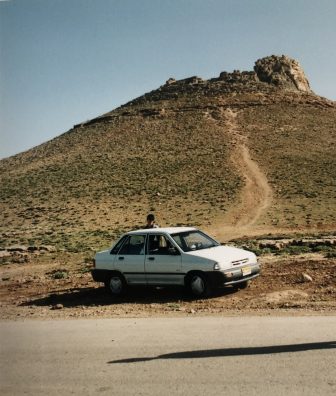
His wrinkles were very deep and his skin was like leather.
Although it was very hot, he was wearing knitted jumper, knitted cap and Salwar.
I regretted that I did not take photos of these impressive people.
I should have been a bit more brazen.
The scenery around the ruins was lovely, too.
The ordinary residential houses were made of mud and already looked like ruins.
There were colourful women working around those houses, which was picturesque.
In Takab, we went to buy some wool.
Those balls of wool were for weaving carpets, but I thought I could use them for knitting, too.
The people in the shop were nice and friendly.
In fact I found people in this town were generally very nice.
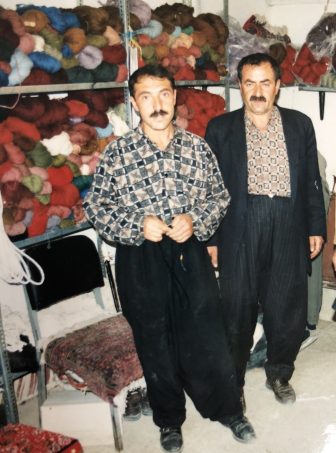
If I had more time, I would have liked to stay longer and spend time walking around the town.
By the way, the traditional way of shopping in Iran is interesting.
First, the buyer and vendor negotiate the price.
When the buyer pays the agreed price, the vendor makes the gesture of refusal as if to say “I could not receive so much money”.
I had already heard about this tradition from Khalil, our guide, but I was surprised when the man at the wool shop did exactly that.
Khalil laughed and said, “I told you” and in the end I paid the amount as we had agreed.


